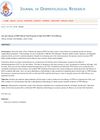Search
for
Sort by
Research
30-60 / 1000+ results
research Androgen Regulation of a Specific Gene in Hamster Flank Organs
Male hormones control a specific gene in hamster skin, with different hormones having varying effects.

research Assessing Low-Dose Oral Minoxidil Efficacy in Androgenetic Alopecia: A Comparative Study of AGA and AGA Unmasked by Telogen Effluvium
Low-dose oral minoxidil is effective and safe for treating androgenetic alopecia.
research Updated Strategies for the Management, Pathogenesis, and Molecular Genetics of Different Forms of Ichthyosis Syndromes with Prominent Hair Abnormalities
Early diagnosis and tailored treatments are crucial for managing ichthyosis syndromes with hair abnormalities.

research The Clock Gene Brain And Muscle Arnt-Like Protein-1 (BMAL1) Is Involved In Hair Growth
A gene called BMAL1 plays a role in controlling hair growth.

research Clinical Efficacy of Microneedle Combined with 5% Minoxidil Solution and Finasteride in the Treatment of Androgenetic Alopecia in Males
Combining microneedling with Minoxidil and Finasteride greatly improves hair growth and reduces hair loss in men.

research Polynucleotides as a Novel Therapeutic Approach in Androgenetic Alopecia: An Analysis of Effectiveness and Safety
Polynucleotides effectively promote hair regrowth in androgenetic alopecia without serious side effects.

research Analyzing Efficacy of Low-Dose Oral Minoxidil, Topical Minoxidil, and Platelet-Rich Plasma with Topical Minoxidil Combination in Patients with Androgenetic Alopecia: A Randomized Controlled Observer Blinded Trial
Combining PRP with topical minoxidil is most effective for hair growth in androgenetic alopecia.

research Effects of Epidermal Growth Factor, Fibroblast Growth Factor, Minoxidil, and Hydrocortisone on Growth Kinetics in Human Hair Bulb Papilla Cells and Root Sheath Fibroblasts Cultured In Vitro
EGF and FGF boost hair cell growth, hydrocortisone slows it, and minoxidil doesn't affect it.

research A Cell-Based System for Screening Hair Growth-Promoting Agents
Apigenin may help promote hair growth and could treat hair loss.
research Percutaneous Penetration of Hair Dyes
Hair dyes penetrate the scalp very minimally, less than 1%.

research Changes in Distribution Pattern of CD8 Lymphocytes in the Scalp in Alopecia Areata During Treatment With Diphenylcyclopropenone
Diphencyprone treatment increases CD8 lymphocytes in the scalp, which is associated with hair regrowth in alopecia areata patients.

research Hair Follicle Changes Following Intense Pulsed Light Axillary Hair Reduction: Histometrical, Histological, and Immunohistochemical Evaluation
Intense pulsed light treatment effectively reduces underarm hair by making hair follicles smaller and extending their resting phase.

research Split-Scalp Pilot Study to Evaluate Effectiveness of Minoxidil 0.5% MMP® Versus Topical Minoxidil 5% in the Treatment of Female Pattern Hair Loss
Both treatments work, but Minoxidil 0.5% MMP® is better for certain scalp areas and less advanced hair loss.

research Cost-Effectiveness Analysis of Laboratory Monitoring in Newly Diagnosed Telogen Effluvium Patients
Targeted testing for telogen effluvium patients can save healthcare costs.
research The Analysis of Genetics and Associated Autoimmune Diseases in Chinese Vitiligo Patients
Generalized vitiligo in Chinese patients is linked to other autoimmune diseases, especially in familial cases.

research A Cross-Sectional Study Evaluating the Relationship of Acne to Androgenetic Alopecia Subtype and Severity
Acne severity is not related to the type or severity of androgenetic alopecia.

research Evaluation of Fractional Carbon Dioxide Laser Alone Versus Its Combination With Betamethasone Valerate in Treatment of Alopecia Areata: A Clinical and Dermoscopic Study
The fractional carbon dioxide laser is a safe and effective treatment for alopecia areata and works better than betamethasone valerate cream alone.

research Animal Models of Androgen-Dependent Disorders of the Pilosebaceous Apparatus
Testosterone causes hair loss in AGA mice, which are good for testing baldness treatments, and both minoxidil and cyproterone acetate can prevent this hair loss.
research Use of Induced Pluripotent Stem Cells in Dermatological Research
iPSCs can help treat genetic skin disorders by creating healthy skin cells from a small biopsy.

research Expression of Beta-Catenin, p63, and CD34 in Hair Follicles During the Course of Androgenetic Alopecia
Higher p63 and CD34 levels found in specific scalp areas may affect hair loss progression.

research Selected Variants of the Melanocortin 4 Receptor Gene (MC4R) Do Not Confer Susceptibility to Female Pattern Hair Loss
MC4R gene variants not linked to female hair loss.
research Recombinant Bacillus Subtilis-Derived Alkaline Protease: A Novel Agent for Skin Depigmentation and Hair Follicle Neogenesis

research Topical Calcipotriol vs Narrowband Ultraviolet B in Treatment of Alopecia Areata: A Randomized-Controlled Trial
Both topical calcipotriol and narrowband UVB improved alopecia, but combining them didn't enhance the effect on hair loss severity, despite higher vitamin D3 levels.

research Retrospective Review of Oral and Topical Minoxidil for Cancer Treatment-Induced Hair Loss
Minoxidil may help with hair loss caused by cancer treatments.

research Topical Sodium Valproate-Loaded Nanospanlastics Versus Conventional Topical Steroid Therapy in Alopecia Areata: A Randomized Controlled Study
Both treatments for alopecia areata showed similar modest effectiveness.

research Use and Misuse of PRP: Clinical Trial Proposal to Determine PRP’s True Efficacy
The document suggests a clinical trial to accurately determine if PRP is an effective treatment for a common type of hair loss in men.

research Mediterranean Diet: Fresh Herbs And Fresh Vegetables Decrease The Risk Of Androgenetic Alopecia In Males
Mediterranean diet with fresh herbs and vegetables lowers male hair loss risk.

research Fluid Platelet-Rich Fibrin Versus Platelet-Rich Plasma in the Treatment of Atrophic Acne Scars: A Comparative Study
Fluid Platelet-Rich Fibrin (PRF) is more effective and faster at improving acne scars than Platelet-Rich Plasma (PRP), with similar mild side effects.
research In Vivo Microautoradiography of [3H]1,24(OH)2D3 (Tacalcitol) Following Topical Application to Normal Rats and In Vitro Metabolism in Human Keratinocytes
Topical tacalcitol can treat psoriasis by acting directly on skin cells.